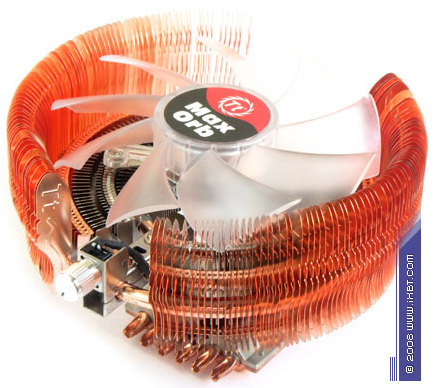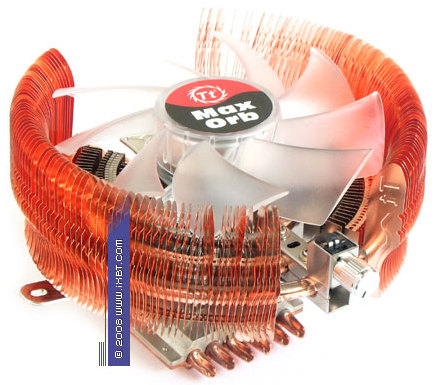MaxOrb EX (CL-P0467)
Our another contender, MaxOrb EX, is also almost a complete copy of the parent MaxOrb design. It just uses modern finish materials (its finning is made of aluminum and copper now).
That is, we again witness a sturdy and technically elegant working medium, which inherited a well thought-out composition of a copper base (60x40x12 mm, 45x40 mm at the bottom), 6 copper heat pipes (6 mm in diameter), copper-aluminum fin-stack (cup-shaped configuration, 140x54 mm), and open impeller (120x120x25 mm, nominal rotational speed -- 2000 rpm). The main attraction of the MaxOrb is also preserved in its place -- the fin-stack is divided into six independent sections, each one supported by its own heat pipe: two inner sections (30 fins, 15x23 mm, aluminum), two internal sections (55 fins, 15x23 mm, aluminum), and two external sections (71 fins of a complex shape, 15x54 mm, copper).
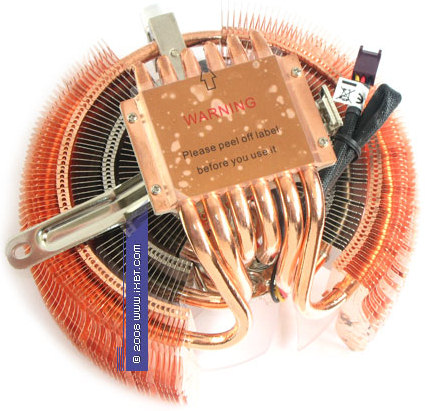
As we have already noted, this design significantly intensifies heat release in case of radial finning -- temperature gradients on the fins become more pronounced, mutual heating between pipes-fins is eliminated, heat pipes become more efficient. So practically the entire surface of MaxOrb EX (about 3000 cm2) is involved into full-blooded heat exchange, acting as a counterpart of tower-like heat sinks of much larger surface area.
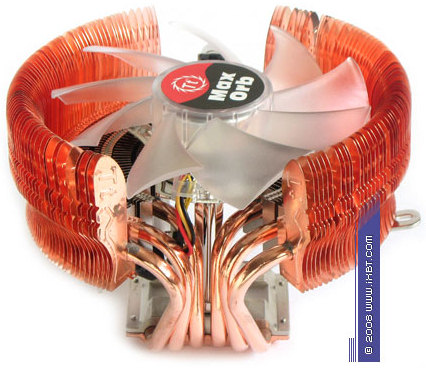
Besides, the cup-like configuration of the finning is itself an excellent thermal ameliorant. Indeed, this feature looks well justified and appropriate: a fan operating in the propeller mode is usually characterized by weak static pressure and slow air flows, but "sinking" an impeller in the "cup" changes the situation . It allows to make the best use of vortex formation at the fan blade sides. As a result, pronounced turbulent flows at the periphery of the impeller blow through the external sections, and contribute to the air flows through the internal fin sections, achieving higher heat release coefficients and proper optimization of the full thermal resistance of the cooler.
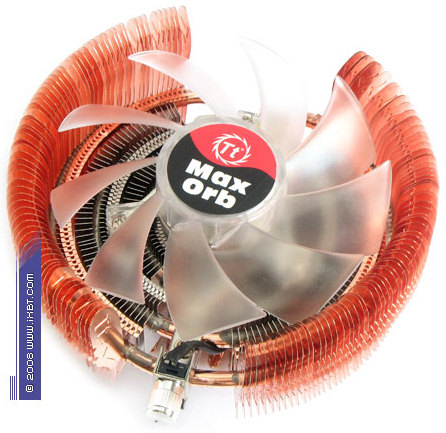
MaxOrb EX also demonstrates neat technical details: all heat pipes are soldered to the base and fins. This cooler observes the rules of good form, just like its forefather, MaxOrb. It guarantees comfortable conditions for heat exchange (especially between pipes and fins). Thus, it raises overall efficiency of the entire thermal structure of the cooler. If we also take into account the copper heat sink (which is potentially more efficient), importance of these two circumstances become hard to overestimate -- MaxOrb EX definitely has all prerequisites to demonstrate decent results both in intense modes (high fan speed, intensive ventilation) and in low-noise conditions (the lowest fan speed, ventilation deficit).
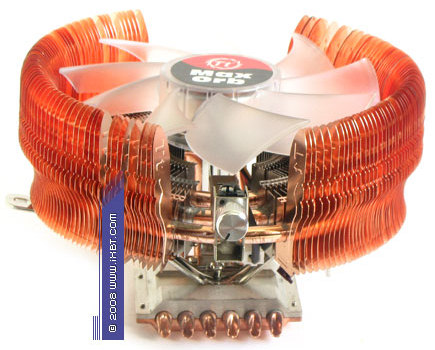
But what concerns usability, this inheritance is a rebuke rather than a praise to our product under review -- the retention module of MaxOrb EX is again very complicated and cannot boast of being friendly to users. It's again the old situation exactly: in case of the Intel LGA775 platform, first of all you install clips on a special plastic frame (they are rather hard to latch), then it's turn to use a screwdriver to fix the "integrated" mounting bracket. A similar procedure is required for the AMD Socket AM2 platform, where you must also remove a motherboard from a PC case and then screw the bundled mounting plate.
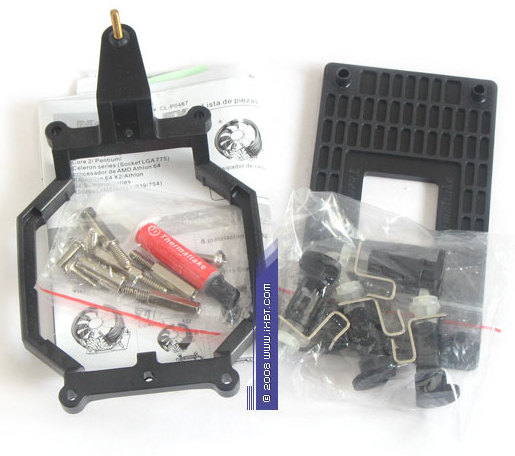
However, it should be noted that this retention module has no issues with technical validity, unlike BigTyp VP -- it agrees well with the weight of the cooler (MaxOrb EX is about 600 g) and provides secure installation of the cooler. Another justificatory moment is its specific radial design, which does not let use retention accessories similar to ergonomic devices of BigTyp VP. However, no matter how you put it, this compromise of a solution still leaves much to be desired. Thermaltake engineers still have some work to do.
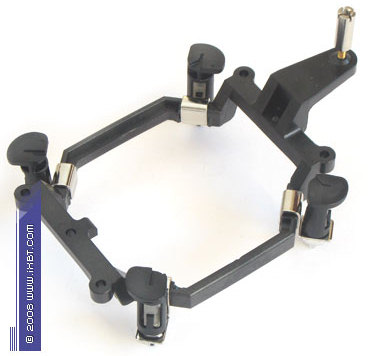
What concerns usability, we cannot ignore the archaic fan speed controller -- this oddity was not so noticeable in the parent model, but the second engagement of this disputable device is truly disappointing. Especially now that most fans come with PWM control. Indeed, it fails to offer the modern range of controlled fan speed (rotational speed can vary from 1300 rpm to 2000 rpm) and deployment site (on-board installation) -- the value of this fan speed control is approaching zero. So if you want to use MaxOrb EX at low speed, you'd better forget about this control and buy a third-party device (potentiometers, multifunctional panels, etc), or use similar features provided by your motherboard. Tertium non datur.
Well, we've cleared up questions of technical design and usability issues, there is no need to elaborate. It's time to address the main aspect of our article -- test results of our coolers under review, BigTyp VP and MaxOrb EX.
Write a comment below. No registration needed!

